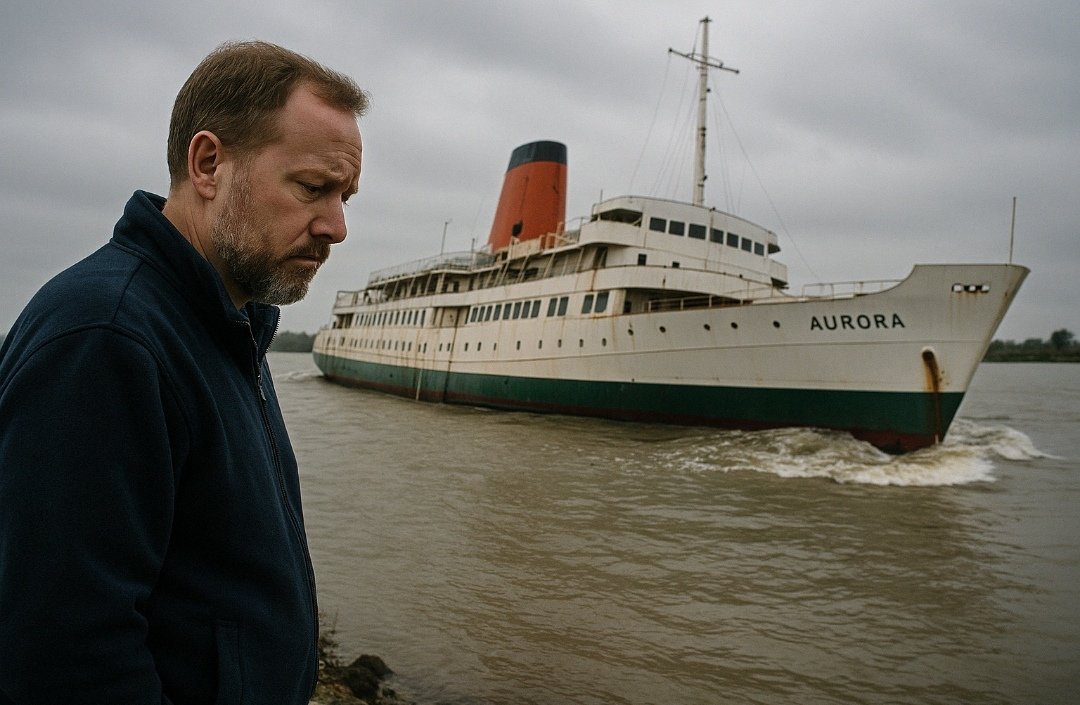A maritime enthusiast who spent over a million dollars restoring a vintage cruise ship he purchased on Craigslist is now grieving its unexpected and untimely demise. The vessel, once a symbol of grandeur and personal achievement, met a tragic end, leaving its owner heartbroken and facing a profound emotional and financial loss.
Chris Willson, a California-based artist and preservationist, discovered the decommissioned cruise ship Aurora listed online in 2008. Drawn to its nostalgic charm and storied past, he acquired the 300-foot vessel for a fraction of its original value. What began as a spontaneous purchase turned into a 15-year-long restoration effort marked by determination, vision, and sacrifice.
Willson invested more than $1 million of his own money, along with countless hours of labor, into bringing the ship back to life. He worked with volunteers, engineers, and maritime historians to restore Aurora’s art deco interiors, repaint her hull, and make her seaworthy again. His goal was to transform the ship into a floating museum and event space, preserving maritime history for future generations.
Despite financial struggles and regulatory hurdles, Willson’s passion project gained national attention and a dedicated following. The restoration was documented through social media and video series, earning admiration from cruise lovers and history buffs alike. The Aurora became a local landmark in Stockton, California, where it was docked during its restoration.
However, that dream came to a shocking halt earlier this month when the Aurora suddenly took on water and sank at its moorings. The vessel, already vulnerable due to its age and ongoing repairs, could not withstand the pressure from a recent series of storms. Despite the owner’s frantic efforts to stabilize the ship, she went down within hours.
Authorities were called to the scene, but it was too late to salvage the ship before she slipped beneath the surface. Willson described the moment as “watching a close friend die in slow motion,” calling it a “horrible death” for something he had grown deeply attached to. “It wasn’t just a boat,” he said. “It was a piece of history, a part of me.”
Environmental concerns have since arisen as officials assess potential pollution from the sunken vessel. Willson has pledged to work with local agencies to minimize the impact and explore options for partial recovery of the ship’s remains. However, the total cost of a full salvage operation is likely to exceed what he can afford on his own.
The loss has ignited a conversation about the difficulties of private historic preservation efforts, especially for large-scale projects like maritime vessels. Without institutional support or consistent funding, many such endeavors remain vulnerable to setbacks. Willson’s journey with Aurora serves as both an inspiration and a cautionary tale for those drawn to restoring relics of the past.
In the aftermath, Willson remains committed to preserving the ship’s legacy, if only in memory and digital archives. “She may be gone, but the story of her restoration lives on,” he said. “And maybe that’s what matters most now—keeping her spirit afloat, even if her hull no longer is.”
